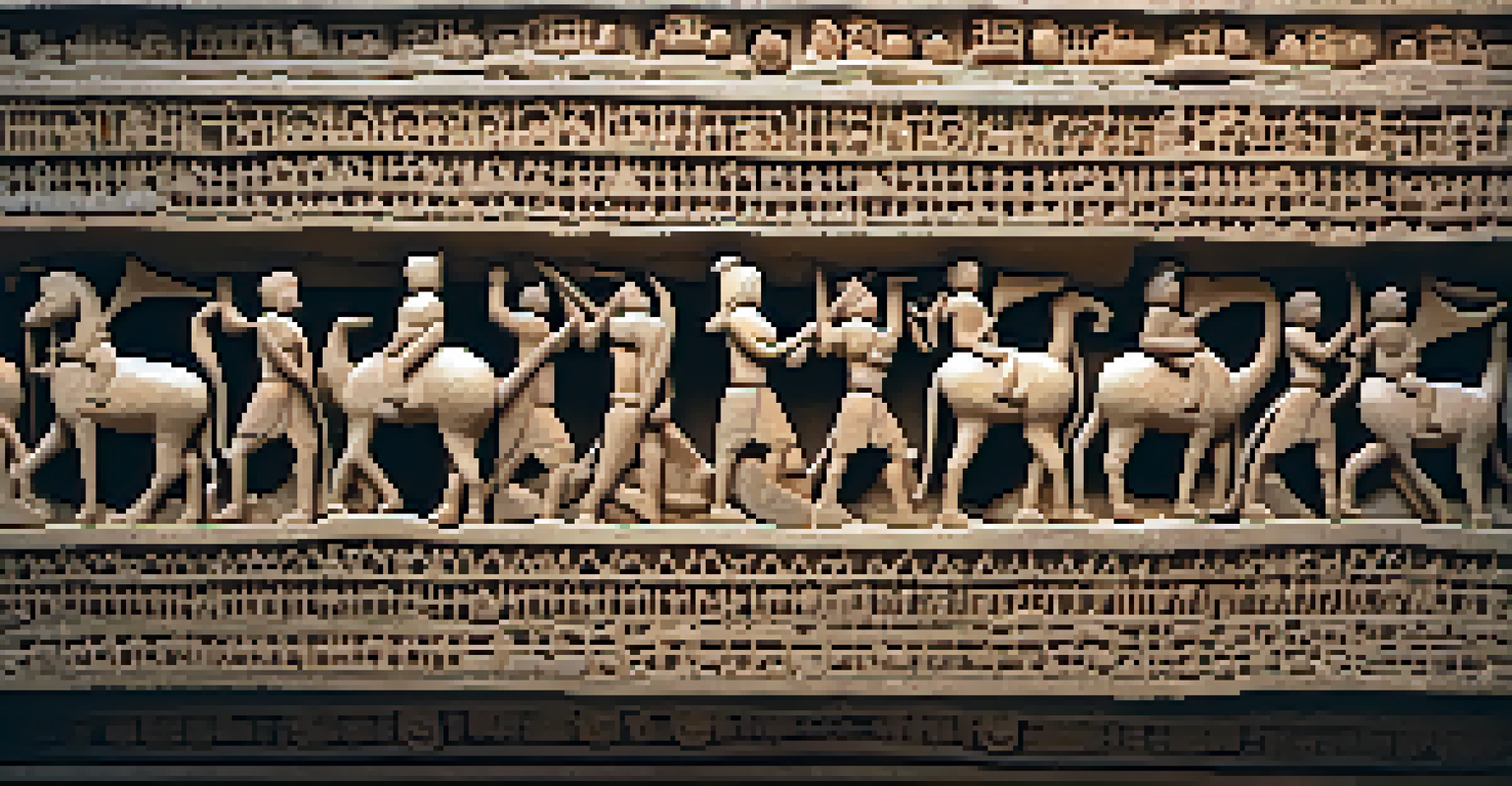The Impact of Climate Change on Heritage Sites in India

Understanding Climate Change and Its Global Impact
Climate change refers to long-term shifts in temperatures and weather patterns, primarily due to human activities. This phenomenon affects ecosystems and communities worldwide, leading to extreme weather events, rising sea levels, and altered precipitation patterns. As these changes intensify, they pose serious risks to not only natural environments but also to cultural and historical landmarks.
The greatest threat to our planet is the belief that someone else will save it.
In India, a country rich in history and heritage, the effects of climate change are becoming increasingly evident. From the majestic Taj Mahal to the ancient ruins of Hampi, these sites are under threat from various environmental factors. As temperatures rise and monsoon patterns shift, many of these iconic structures face degradation that could alter their very essence.
Understanding the global impact of climate change helps frame the urgency of preserving heritage sites. Recognizing these threats is the first step toward safeguarding these incredible legacies for future generations.
The Vulnerability of India's Heritage Sites
India's diverse heritage sites, which include UNESCO World Heritage Sites, are particularly vulnerable to climate change. Many of these locations are situated in regions that experience extreme weather, such as floods, droughts, or heatwaves. For instance, the intricate marble of the Taj Mahal is already showing signs of discoloration and erosion due to increased humidity and air pollution.

Moreover, rising sea levels threaten coastal heritage sites like the historic city of Diu, where centuries-old forts and churches are at risk of submersion. The combination of natural disasters and slow environmental changes makes these sites increasingly susceptible to damage. Each event not only erodes their physical structure but also the stories and culture they represent.
Climate Change Threatens Heritage
Heritage sites in India face severe risks from climate change, affecting their preservation and cultural significance.
This vulnerability calls for urgent action to implement protective measures and consider climate resilience in conservation strategies. Without addressing these issues, we risk losing invaluable pieces of our shared history.
Impact of Extreme Weather Events on Heritage Sites
Extreme weather events, such as cyclones and heavy monsoons, are becoming more frequent in India due to climate change. These events can lead to immediate and severe damage to heritage sites, washing away centuries of history in mere hours. For example, the devastating floods in Kerala in 2018 caused significant damage to local temples and other historical structures.
We do not inherit the earth from our ancestors; we borrow it from our children.
Such incidents not only affect the physical integrity of these sites but also disrupt the communities that rely on them for cultural and economic support. Local artisans and guides often find their livelihoods impacted when heritage tourism declines due to site damage. This ripple effect highlights the broader implications of climate change beyond just the physical realm.
To mitigate these impacts, it is essential to develop robust disaster management plans and invest in infrastructure that can withstand extreme weather. By prioritizing resilience, we can help protect these treasures from the worst effects of climate change.
The Role of Urbanization in Heritage Site Degradation
Rapid urbanization in India presents another challenge for heritage sites, often exacerbating the impacts of climate change. As cities expand, they encroach upon historic areas, leading to increased pollution, heat, and strain on resources. For instance, the rising temperatures in cities like Delhi not only affect the comfort of residents but also contribute to the deterioration of nearby historical monuments.
Urban development projects, often initiated without consideration for heritage conservation, can lead to irreversible damage. The construction of roads, buildings, and other infrastructure can disturb the delicate balance of heritage sites, making them more susceptible to climate-related risks. This urgent issue demands a balanced approach that prioritizes both development and preservation.
Urbanization Complicates Conservation
Rapid urbanization exacerbates the degradation of heritage sites, increasing pollution and resource strain on these historical areas.
Engaging local communities in conservation efforts can help bridge the gap between urban growth and heritage protection. By fostering a sense of ownership, we can encourage sustainable practices that mitigate the impacts of urbanization on these invaluable sites.
Cultural Loss: The Human Element of Climate Change
The degradation of heritage sites due to climate change extends beyond physical loss; it represents a profound cultural loss for communities. Each site embodies unique stories, traditions, and identities that are passed down through generations. When these sites are damaged or destroyed, the cultural narratives tied to them are at risk of fading away.
Take, for example, the ancient rock-cut caves of Ajanta and Ellora. These magnificent structures not only showcase extraordinary artistry but also reflect the spiritual and cultural life of their time. As climate change threatens their preservation, the communities that cherish these sites may find their historical context and cultural practices eroding.
Recognizing the human element in the conversation about climate change is crucial. It’s not just about preserving stone and mortar; it's about safeguarding the stories and identities that shape who we are as a society.
Collaborative Approaches to Heritage Conservation
Addressing the impact of climate change on heritage sites in India requires collaborative efforts from various stakeholders. Government bodies, NGOs, local communities, and international organizations must come together to create effective conservation strategies. By pooling resources and expertise, we can develop comprehensive plans that prioritize both heritage preservation and climate resilience.
Successful initiatives around the world show that collaboration yields positive results. For instance, organizations like the Indian National Trust for Art and Cultural Heritage (INTACH) have been instrumental in raising awareness and mobilizing resources for heritage conservation. Their efforts highlight the importance of community involvement and shared responsibility.
Collaboration is Key to Preservation
Effective conservation of heritage sites requires collaboration among various stakeholders to develop strategies that prioritize both preservation and climate resilience.
Implementing best practices and sharing knowledge from successful conservation projects can help strengthen India's approach. By fostering a culture of collaboration, we can ensure that our heritage sites are not only preserved but thrive in the face of climate challenges.
The Path Forward: Sustainable Practices for Preservation
To safeguard India's heritage sites against climate change, adopting sustainable practices is crucial. This involves integrating climate resilience into conservation efforts, focusing on eco-friendly materials, and using innovative technologies. For instance, employing traditional building methods that are more resilient to climatic changes can help protect structures from deterioration.
Moreover, promoting sustainable tourism can play a vital role in preservation. Encouraging visitors to engage with heritage sites responsibly not only raises awareness but also generates funds for ongoing maintenance and conservation efforts. By creating a mutually beneficial relationship between tourism and heritage, we can foster a mindset of stewardship.

Ultimately, the path forward lies in recognizing that preserving our heritage is a shared responsibility. By embracing sustainability, we can ensure that future generations inherit not just the physical structures, but the cultural richness they embody.